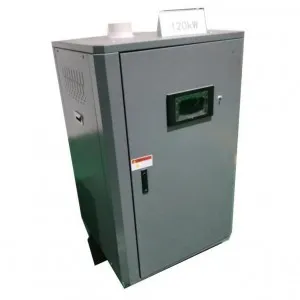- Afrikaans
- Albanian
- Amharic
- Arabic
- Armenian
- Azerbaijani
- Basque
- Belarusian
- Bengali
- Bosnian
- Bulgarian
- Catalan
- Cebuano
- China
- China (Taiwan)
- Corsican
- Croatian
- Czech
- Danish
- Dutch
- English
- Esperanto
- Estonian
- Finnish
- French
- Frisian
- Galician
- Georgian
- German
- Greek
- Gujarati
- Haitian Creole
- hausa
- hawaiian
- Hebrew
- Hindi
- Miao
- Hungarian
- Icelandic
- igbo
- Indonesian
- irish
- Italian
- Japanese
- Javanese
- Kannada
- kazakh
- Khmer
- Rwandese
- Korean
- Kurdish
- Kyrgyz
- Lao
- Latin
- Latvian
- Lithuanian
- Luxembourgish
- Macedonian
- Malgashi
- Malay
- Malayalam
- Maltese
- Maori
- Marathi
- Mongolian
- Myanmar
- Nepali
- Norwegian
- Norwegian
- Occitan
- Pashto
- Persian
- Polish
- Portuguese
- Punjabi
- Romanian
- Russian
- Samoan
- Scottish Gaelic
- Serbian
- Sesotho
- Shona
- Sindhi
- Sinhala
- Slovak
- Slovenian
- Somali
- Spanish
- Sundanese
- Swahili
- Swedish
- Tagalog
- Tajik
- Tamil
- Tatar
- Telugu
- Thai
- Turkish
- Turkmen
- Ukrainian
- Urdu
- Uighur
- Uzbek
- Vietnamese
- Welsh
- Bantu
- Yiddish
- Yoruba
- Zulu
Nov . 10, 2024 21:55 Back to list
Properties and Applications of Pearlitic Gray Cast Iron in Engineering and Manufacturing
Understanding Pearlite Gray Cast Iron
Pearlite gray cast iron is a fascinating material known for its unique combination of properties that make it particularly useful in various industrial applications. With its distinctive microstructure and mechanical characteristics, this alloy is crucial in fields ranging from automotive manufacturing to construction and machinery.
Composition and Microstructure
Pearlite gray cast iron gets its name from two sources the presence of graphite flakes, which impart the gray coloration to the fracture surface, and the pearlitic microstructure that forms during solidification and subsequent cooling. The primary alloying elements in gray cast iron include iron (Fe), carbon (C), and silicon (Si). The carbon content usually ranges from 2.5% to 4%, while silicon typically comprises 1% to 3%.
During the solidification of molten iron, as it cools, the carbon segregates out into graphite flakes, while the remaining iron solidifies into a matrix that can contain different microstructures, including ferrite or pearlite. The pearlite phase, which consists of alternating layers of ferrite (a relatively soft and ductile phase) and cementite (iron carbides), gives the material increased strength and hardness compared to other forms of gray cast iron.
Mechanical Properties
The mechanical properties of pearlitic gray cast iron are one of its main advantages. This material exhibits excellent wear resistance and high tensile strength, making it suitable for heavy-duty applications. The presence of graphite also contributes to its machinability, allowing it to be easily shaped and processed into a variety of components, such as engine blocks, machine beds, and pipes.
pearlitic gray cast iron

In addition to strength, pearlitic gray cast iron demonstrates good thermal conductivity, which is essential in applications where heat dissipation is a concern. It can withstand moderate temperatures without deforming and provides effective thermal stability, making it ideal for engine components and other machinery that experience significant thermal stress.
Applications
Due to its unique properties, pearlitic gray cast iron is widely used across different industries. In the automotive sector, it is mainly employed to manufacture engine blocks and cylinder heads where strength and thermal stability are critical. The ability to absorb vibrations and dampen sound makes it advantageous for these applications, contributing to quieter operation.
In construction, pearlitic gray cast iron is utilized in the production of pipes, manhole covers, and various structural components. Its strength and durability ensure that these products can withstand the rigors of everyday use and harsh environmental conditions, making it a popular choice for civil engineering applications.
Moreover, manufacturers often favor pearlitic gray cast iron in the production of machine tools and equipment. Its excellent wear resistance ensures a longer service life for cutting tools and components, reducing the need for frequent replacements and lowering overall maintenance costs.
Conclusion
In summary, pearlitic gray cast iron stands out as a versatile material with a unique microstructure that combines the best of both worlds the strength and hardness provided by pearlite and the excellent machinability offered by graphite flakes. Its mechanical properties and ability to withstand wear and thermal stress make it an indispensable material in many industries. As manufacturing technologies continue to evolve, the demand for innovative applications of pearlitic gray cast iron is likely to grow, further cementing its place in the world of engineering and materials science. Understanding the characteristics and applications of this remarkable alloy is essential for engineers, designers, and manufacturers looking to leverage its benefits in their projects.
-
Premium Cast Iron Water Main Pipe: Durable, Corrosion-Resistant
NewsAug.03,2025
-
Durable Cast Iron Water Mains | AI-Optimized Systems
NewsAug.02,2025
-
High-Efficiency Propane Boiler for Baseboard Heat | Save Energy
NewsAug.01,2025
-
Premium Source Suppliers for Various Gray Iron Castings
NewsJul.31,2025
-
Durable Cast Iron Water Main Pipes | Long-Lasting
NewsJul.31,2025
-
High-Quality Cast Iron Water Main Pipe for Durable Infrastructure
NewsJul.30,2025


